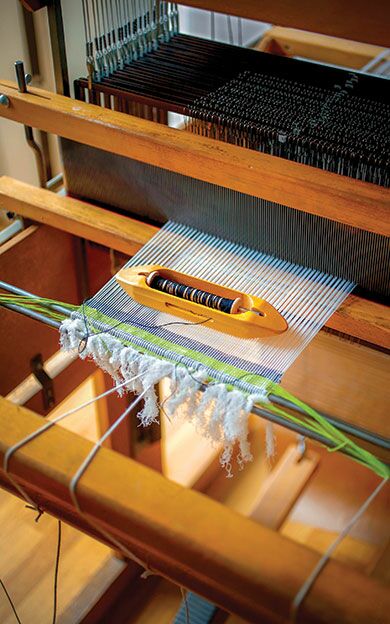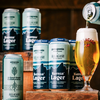Portland textile designer mixes form and function
A fellow designer once told Elizabeth Whelan that Americans buy 45 pieces of clothing a year. That's a lot, she says, and it's prompted by the many fashion houses that buy fabrics from Asia at a low price point. As a result, the fabrics often are not well made.
“The question is, is it worth it? Does it make economic sense?” she asks about the abundance of cheap clothing. “Consumers buy what they're given.” Her company, Elizabeth Whelan Design, is above the State Theatre in Portland. It has three employees.
For Whelan, who returned to Maine last year after spending 25 years as a designer in New York City, fabrics should last. They also should be both functional and fashionable. As an example, she holds a fabric swatch woven with reflective thread, a sporty pattern and the ability to wick moisture: she designed it for Nike's customers who run after dark.
While Nike may be her best-known client, she also worked with mentor Niels Different in New York, helping design woven fabrics for Humanscale's well-known Freedom and Liberty ergonomic chairs. Working with Different, who was an industrial designer, changed Whelan's whole attitude about design in 1999. She realized fabric is not just about aesthetics, but also about function. Fabric to cover a chair could be trendy or beautiful, but also offer back support.
“I create everything from the ground up,” she says, opening a notebook with graph paper, its hundreds of squares filled in by hand with different colored pencils to build patterns that are later computerized so a mill can reproduce them. “Fabrics that do something and look good.”
Last year, she was a finalist for the Future Material Awards in Dresden, Germany.
Mainebiz sat down recently with Whelan at her colorful, sun-drenched studio on chairs made with one of her woven leather designs. An edited transcript follows.
Mainebiz: How did you get started in textiles?
Elizabeth Whelan: I came to Portland in the 1980s, and was doing knitting and needlework as a hobby. I worked for a couple years in the Thos. Moser showroom and took courses at the Portland School of Art, which is now the Maine College of Art.
MB: Why did you leave Portland?
EW: I wanted to see if I had the ability to go beyond being a hobbyist, so I went to the Rhode Island School of Design for three years and studied textile design. I always wanted to come back here, but I ended up spending 25 years in New York. I moved there in 1991 and in 1997 I started my own studio. Good things happened in New York. In 2013 the Cooper Hewitt Smithsonian Design Museum accepted some of my work. I'm so glad for the New York experience. It opened me up. I came back to Maine in May 2014, for the lifestyle.
MB: Who are your clients?
EW: I don't have customers in Maine yet. My clients want product-specific work. Like Nike Running and Nike Equipment, Knoll Textiles, Humanscale chairs and Spinneybeck leather weave. I'm in three to four different consumer-driven industries.
MB: What distinguishes your designs?
EW: We do a lot of work by hand and then move it to machines. I do the prototyping so the designs can go to a mill, which can produce them. For example, I was approached by Nike because we used the same mills. I work with their advanced materials group. I keep in mind the end use of the fabrics. Nike has different sports groups, so the advanced materials group works with Nike running, equipment, footwear concepts and action sports.
MB: Is it more difficult to create cutting-edge fabrics away from the bustle of New York?
EW: New York is a very man-made environment. In Maine, nature is the main show. New York is a very commercially driven place. What is going on in design here is new ways of thinking. Maine has strengths and drawbacks. As a business coming back, it is much more friendly and open. New York is very competitive. I have no intention of not designing with a level of purpose and forward-thinking, and finding how to do that in a sustainable way.
I am a textile designer. I really want to work abroad but I have no degree or diploma, just twenty years of experience












1 Comments